The Milford Track, often referred to as New Zealand’s most famous walk, has been captivating the hearts of hikers for over 150 years.
Located within the breathtaking Fiordland National Park, this exceptional trail takes adventurers through a world of alpine and fiord landscapes, showcasing the pristine beauty of New Zealand’s wilderness.
Stretching across approximately 53 kilometers, hikers on the Milford Track follow a well-defined path through glacier-carved valleys, ancient rainforests, and past magnificent cascading waterfalls.
For those wishing to experience this awe-inspiring journey with a touch of luxury, 5-day guided walks complete with accommodation and meals are available.
History of Milford Track
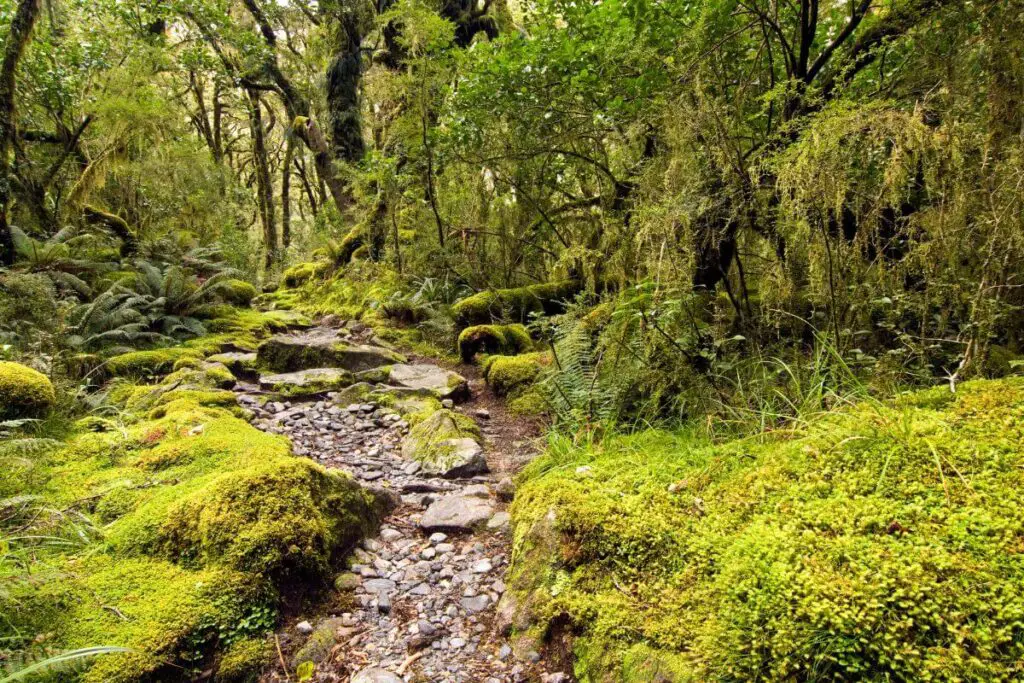
The Milford Track, located in the breathtaking Fiordland National Park in southwestern New Zealand, has attracted hikers and nature lovers for over 150 years.
Its origin dates back to 1888 when a track was cut up the Arthur Valley to the Sutherland Falls, marking the first known European crossing of the pass that year. The track was commissioned by C.W. Adams, the chief surveyor of Otago, and undertaken by Donald Sutherland.
Over the years, the Milford Track has evolved and developed, attracting more and more visitors, but the alpine and fiord scenery remains as stunning as ever. As part of the Fiordland National Park, the hiking route passes through lush temperate rain forests and majestic mountains, offering hikers an unparalleled experience.
Throughout its history, the Milford Track has not only been a fascinating hiking destination, but also a unique location to learn about New Zealand’s natural heritage. With a rich history spanning from the early explorers to today’s eager adventurers, the Milford Track’s enduring beauty continues to thrill and inspire people from all over the world.
Location and Access
The Milford Track is a popular hiking trail located in Fiordland National Park in the South Island of New Zealand.
It stretches 53.5 km from Lake Te Anau to Milford Sound, offering hikers a unique and unparalleled experience amidst majestic mountains and diverse rainforest ecosystems.
Getting There
To access the Milford Track, start at Lake Te Anau. From Te Anau, it’s a 30-minute bus or private transport ride to Te Anau Downs.
From there, a boat trip will take you to Glade Wharf, which marks the beginning of the Milford Track. At the end of the track, a short boat ride from Sandfly Point takes you to Milford Sound/Piopiotahi, offering world-famous views along the way.
Transportation Options
There are various transportation options available to help you reach and navigate the Milford Track.
These include:
- Bus: Buses run regularly from Te Anau to Te Anau Downs, providing a convenient and affordable option for reaching the trailhead.
- Private Transport: If you prefer a more personalized experience, you can opt for private transportation from Te Anau to Te Anau Downs.
- Boat Trips: Boat trips from Te Anau Downs to Glade Wharf and Sandfly Point to Milford Sound are necessary to access the start and end of the track. These boat trips can be pre-booked, ensuring a seamless and enjoyable experience.
Make sure to book your transportation in advance, especially during the peak hiking season, as transport options and space may be limited.
The Milford Track Highlights
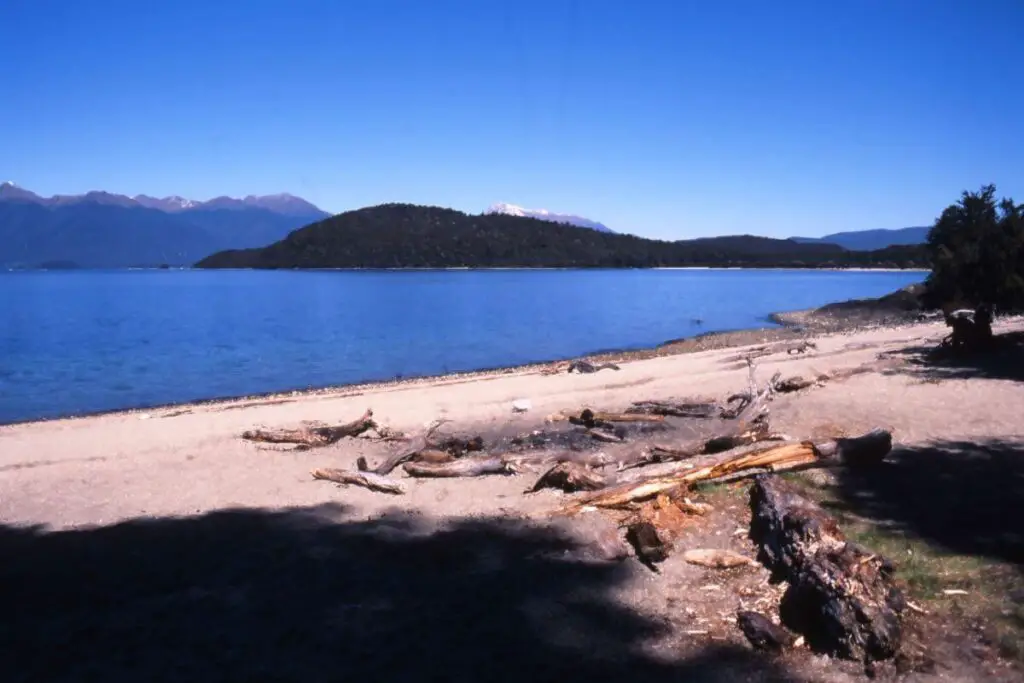
Sutherland Falls
The Milford Track showcases several attractions, one of which is the stunning Sutherland Falls. This impressive waterfall is one of the tallest in New Zealand, plunging 580 meters over three cascades.
The misty breath and roaring sound of Sutherland Falls create a magnificent experience for hikers. Don’t miss the opportunity to get up close and feel the power of this natural wonder as you hike the Milford Track.
Mackinnon Pass
Another highlight of the Milford Track is the breathtaking Mackinnon Pass. This alpine pass offers panoramic views of the surrounding mountains and valleys.
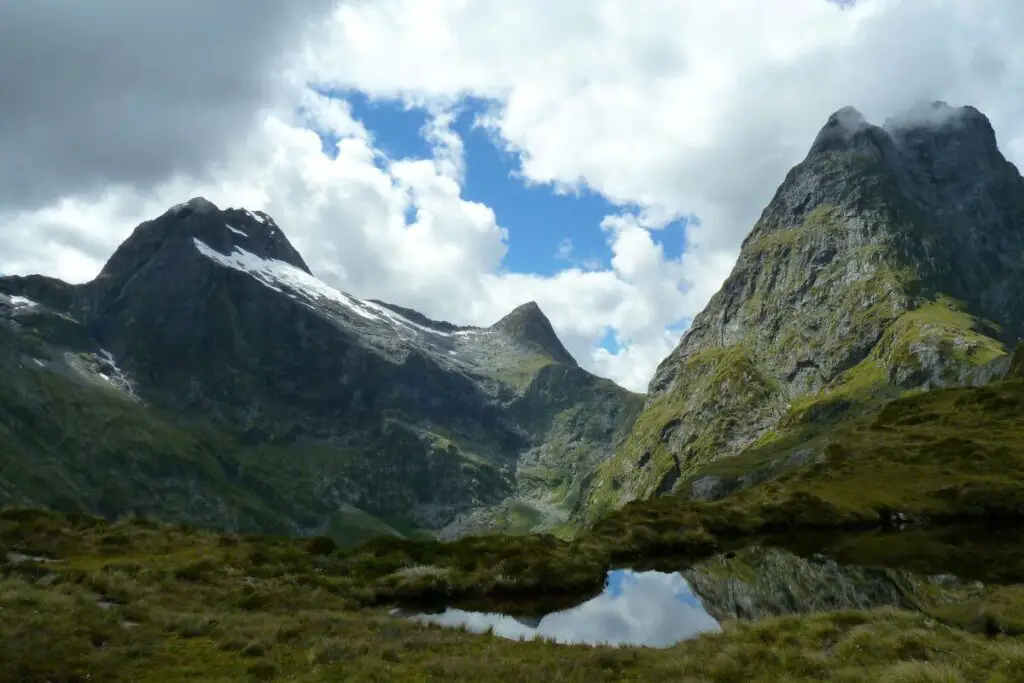
As you climb this section of the track, you’ll be rewarded with unforgettable scenery that includes pristine lakes and sky-scraping mountain peaks.
The Mackinnon Pass is not only a visual treat, but it also holds historical significance, as it was discovered by explorer Quintin McKinnon in 1888.
Clinton River Valley
The Clinton River Valley is another standout feature of the Milford Track. Hikers will wander through ancient rainforests and alongside the meandering Clinton River, which has carved its way through the valley over thousands of years.
The valley’s lush vegetation and serene atmosphere provide a true sense of serenity and connection with nature. Keep an eye out for native bird species as you explore this enchanting part of the track.
Hiking Experience
Trail Difficulty
The Milford Track is often referred to as “the finest walk in the world” and offers a moderately challenging trek for hikers.
The trail traverses valleys carved by glaciers, ancient rainforests, and passes cascading waterfalls, providing a spectacular experience for those willing to take on the challenge.
Most hikers with a reasonable level of fitness should be able to complete the track without difficulty, but there are some steep sections and rough terrain to navigate.
Duration and Distance
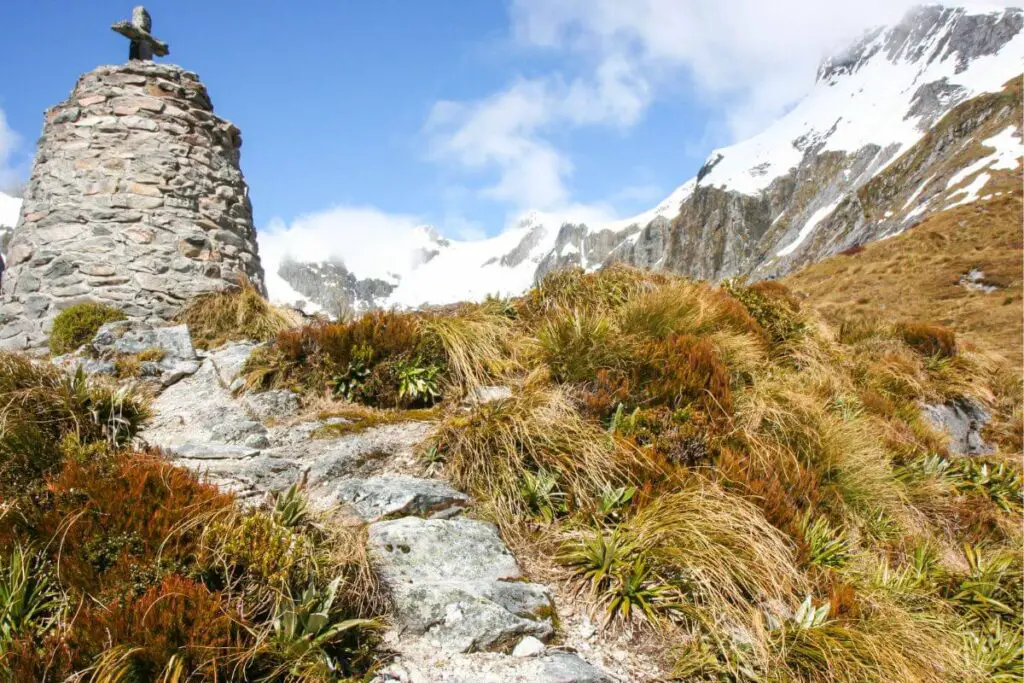
The Milford Track stretches for 53.5 kilometers (33.2 miles) from Lake Te Anau to Milford Sound through the majestic Fiordland National Park. Hikers typically complete the trek over four to five days.
The Ultimate Hikes guided walk, for example, is a 5-day, 4-night all-inclusive hike that covers the entire trail.
Here’s a breakdown of the daily distances covered:
- Day 1: 1.6 km (1 mile)
- Day 2: 16.5 km (10.3 miles)
- Day 3: 14 km (8.7 miles)
- Day 4: 21.4 km (13.3 miles)
Weather Conditions
Fiordland National Park is known for its unpredictable and rapidly changing weather conditions. Heavy rainfall is common in the region, with an annual rainfall averaging 6,700 mm (264 inches).
To enjoy the best hiking experience on the Milford Track, it is recommended to walk the trail during the Great Walks Season, which runs from late October to April. During this period, weather conditions are more stable and temperate.
However, hikers should be prepared for sudden weather changes, such as rain, strong winds, or even snow at higher altitudes. It is important to pack accordingly, with waterproof gear and warm layers essential on this iconic New Zealand hike.
The Milford Track Hut Accommodation Overview
Types of Huts
On the Milford Track, travelers have various accommodation options to choose from. One popular choice is the three huts managed by the Department of Conservation (DOC). These huts offer shared facilities and bunkrooms, ensuring that hikers have a comfortable place to rest during the trek.
For a more luxurious experience, some hikers may opt for private lodges offered by Ultimate Hikes. These lodges feature shared rooms accommodating 4-6 people, as well as private queen rooms for 1-2 individuals, both with shared bathroom facilities.
Booking and Availability
It is essential to book your hut accommodations well in advance, particularly during the Great Walks season. The Department of Conservation manages the booking process for the three huts on the track, and reservations can be made through their website. Please note that camping is not permitted on the Milford Track.
For those interested in private lodge accommodations, booking can be made through the Ultimate Hikes website. Since these lodges tend to book up quickly, it is advisable to secure your reservation as early as possible to avoid disappointment.
Safety and Preparation
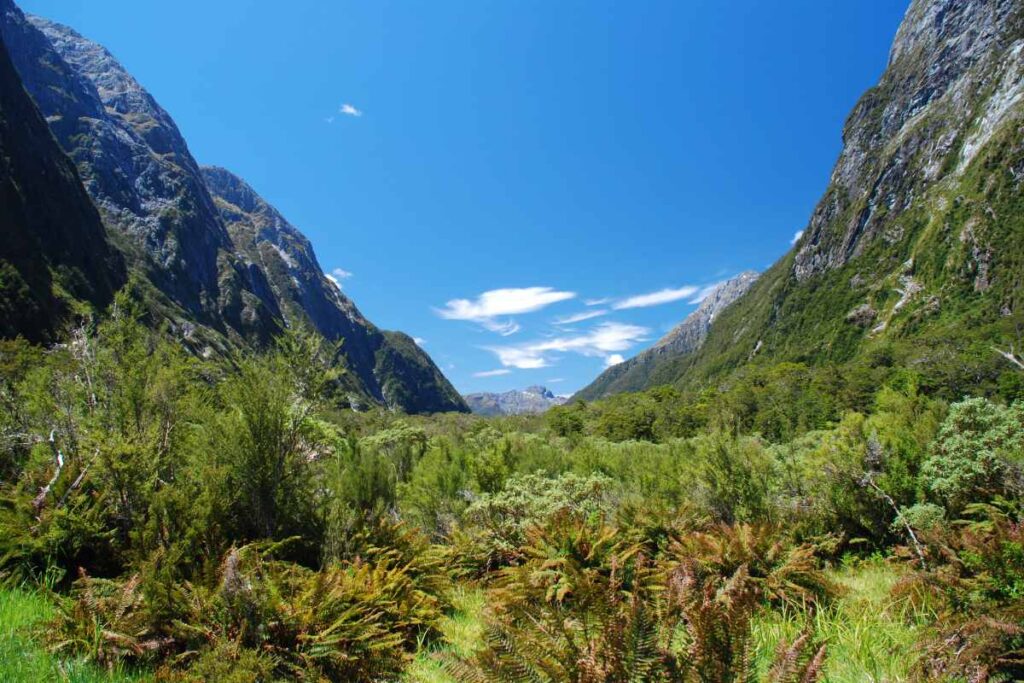
Permits and Regulations
Before embarking on the Milford Track, it is important to obtain the necessary permits and be aware of regulations.
During the Great Walks season (late October to late April), bookings for huts and campsites are essential, as the track operates on a limited capacity.
You can book your hut and campsite through the Department of Conservation (DOC). Make sure to follow their guidelines and respect the environment during your hike.
Essential Gear
Proper gear is crucial for a safe and enjoyable experience on the Milford Track. According to the DOC, some essentials include:
- Waterproof and windproof clothing
- Sturdy hiking boots
- Warm layers, such as thermal or wool clothing
- Food and cooking supplies
- First aid kit
- Map and compass, or GPS device
Remember to pack light, but also be prepared for unpredictable weather conditions.
Health and Fitness Requirements
The Milford Track is a moderately challenging hike, so you need to be in good physical condition before attempting it. Walk My World suggests that you should be able to comfortably walk for 6-8 hours per day, carrying a backpack of 10-15 kgs (22-33 lbs). Additionally, expect uneven terrain and some steep ascents and descents.
It is important to build up your fitness and strength prior to your hike. Training through regular walks, hikes, and cardio exercises is recommended. Lastly, consider your medical conditions and consult with your doctor if needed before undertaking this adventure.
Find out – Is hiking good cardio?
Conservation and Environmental Impacts
Milford Sound Piopiotahi, as New Zealand’s premier visitor attraction, has been striving to strike a balance between promoting tourism in the area and preserving its rich natural wonders.
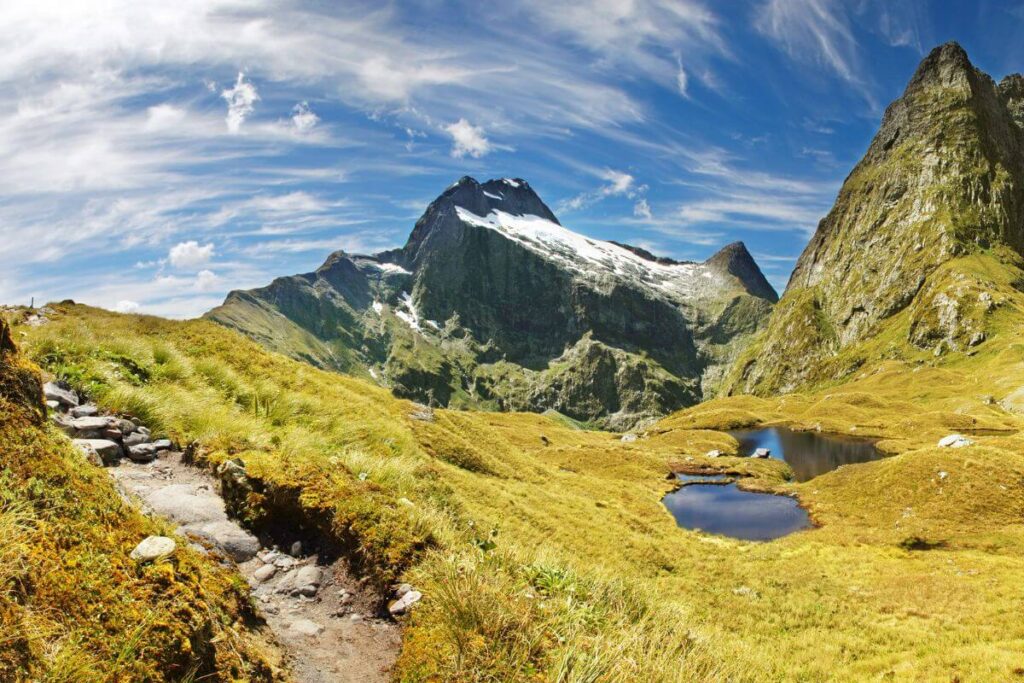
The Milford Opportunities Project aims to introduce a sustainable tourism system paid for by visitors, reducing environmental impacts and reallocating funds to conservation efforts..
During the peak season, Milford Track welcomes up to 40 independent hikers and 40 guided walkers each day, leading to increased foot traffic and, potentially, environmental impacts.
To address this issue, Trips & Tramps and other operators in the region are focused on integrating sustainability and waste reduction initiatives into their operations.
Some of the measures taken to mitigate environmental impacts on the Milford Track include:
- Limiting visitor numbers during peak periods
- Implementing strict waste management practices
- Encouraging guests to use reusable containers and minimize single-use plastics
- Using renewable energy sources whenever possible
Additionally, the Fiordland community and businesses have shown a strong commitment to guardianship and conservation, fostering numerous conservation projects in the region. By working together, they aim to protect and preserve the unique beauty of Milford Sound Piopiotahi and its surroundings for generations to come.






